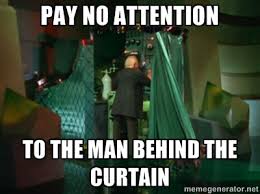[spb_boxed_content type=”coloured” box_link_target=”_self” padding_vertical=”0″ padding_horizontal=”0″ width=”1/1″ el_position=”first last”]
Are you sometimes frustrated by jargon that you feel you should understand (at least rudimentarily) but don’t? Well, maybe you are above all that, but I certainly am not. It drives me crazy when I hear a term or a phrase but I really don’t know what it means or refers to. One such term is ‘Web 2.0’. So I did a little reading. And guess what? Web 2.0 is like the Wizard of Oz–all show and just a ordinary old man behind the curtain.

Web 2.0 simply refers to the ability for users (like you and me) to interact with the web. Social media is commonly cited as the best example of Web 2.0 but there are many others. When you comment on a blog post or tag photos on someone else’s Facebook, you are 2.0ing.
But don’t get too excited. Web 2.0 was first coined in 2004, which makes it ancient. Web 3.0 will overtake and pass 2.0. To get ahead of the terminology curve, I did some reading on Web 3.0, and here’s what I can tell you.
Web 3.0 is natural, everything, and everywhere. On Web 3.0 you will use natural language searching rather than Boolean operators for complex searches. A Boolean search for a doctor in Chicago who is an allergy specialist looks like this:
“Doctor” or “MD” and “Chicago” and “allergy”
The or and the and are called Boolean operators. This has been the long established methodology for searching. If you use the Google Advanced search, you are using the Boolean method, whether you know it or not. In Web 3.0 you will be able to perform the same search by entering (or speaking):
“Find me a doctor in Chicago who is an allergist”
This is called natural language searching and is already in place with some apps, like Siri. “Aha” I hear you say. “I have tried this, and it doesn’t work very well.” Enter ‘everything and everywhere’. One of the reason the natural language searching tools can be frustrating is that search engines look through (virtual) pages of text looking for the terms “Chicago” and “allergist”. However, with the implementation of RDF (a Web 3.0 technology), finding these terms will be more efficient and effective. RDF (Resource Description Framework) is a methodology that will link the metadata associated with each of these terms. Confused? Or wondering why you should care? Good! Come back for the next post.
[/spb_boxed_content]
